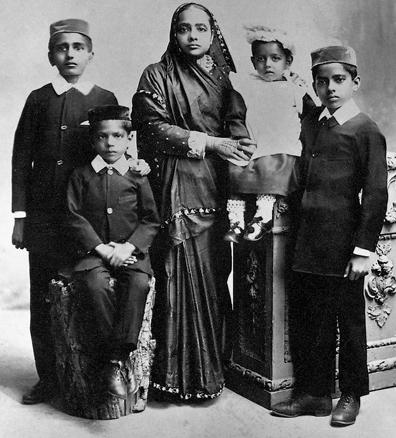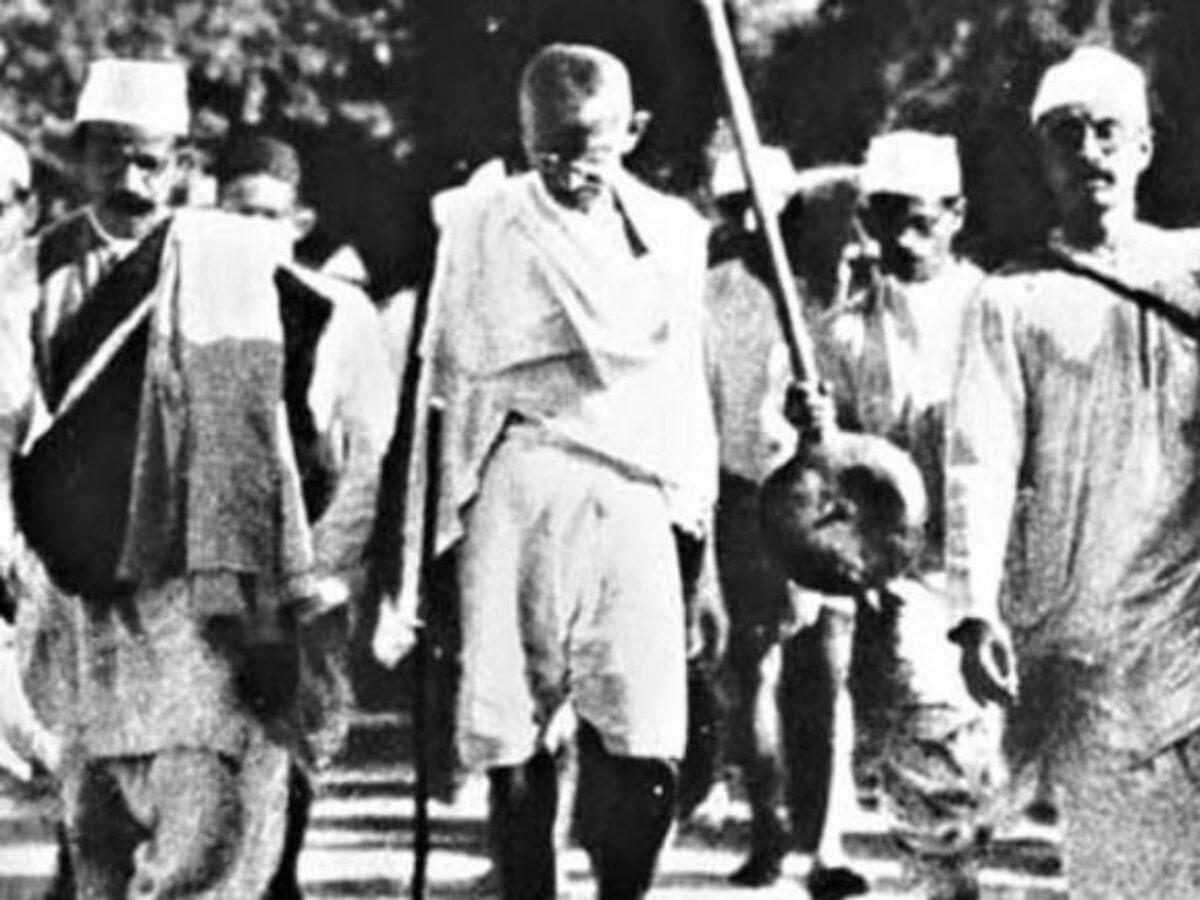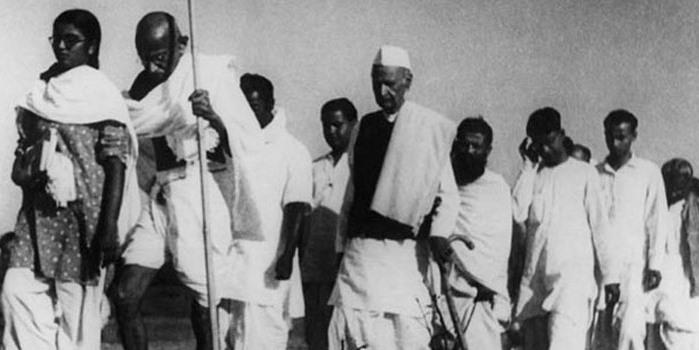Table of Contents
Full Name of Mahatma Gandhi or Bapu Ji
Mohandas Karamchand Gandhi is the full name of Mahatma Gandhi. The National also called Gandhi ji Bapu i.e. why Mahatma Gandhi is known as The Father of The Nation “India”
Who was Mahatma Gandhi?
Mohandas Karamchand Gandhi, popularly known as Mahatma Gandhi, was an Indian political and spiritual leader who played a significant role in India’s independence movement against British colonial rule. He was born on October 2, 1869, in Porbandar, a coastal town in Gujarat, India.
Biography of Mohandas Karamchand Gandhi
Mohandas Karamchand Gandhi, commonly known as Mahatma Gandhi, was born on October 2, 1869, in Porbandar, India. He became a prominent leader in India’s struggle for independence from British rule. Gandhi’s early life was marked by his upbringing in a devout Hindu family and exposure to principles of nonviolence and truthfulness.
After studying law in London, Gandhi moved to South Africa, where he first engaged in political activism, fighting against racial discrimination. His experiences in South Africa shaped his commitment to nonviolent resistance.
Upon returning to India in 1915, Gandhi emerged as a leader in the Indian National Congress. He promoted the concept of “Satyagraha,” advocating nonviolent civil disobedience as a means to achieve social and political change. Some of his notable campaigns included the Salt March and the Quit India Movement.
Gandhi’s philosophy of nonviolence had a profound impact on the Indian independence movement and inspired similar struggles worldwide. Tragically, he was assassinated on January 30, 1948, by a Hindu extremist. Despite his death, his legacy endures, with Gandhi being remembered as a symbol of peace, justice, and the power of nonviolent protest in the pursuit of freedom and social justice.

Mahatma Gandhi Birth and Family
Mahatma Gandhi, one of the most iconic and revered figures in Indian history, was born on October 2, 1869, in Porbandar, a coastal town in the western Indian state of Gujarat. Born to Karamchand Gandhi, a diwan (chief minister) of Porbandar, and his wife Putlibai, Mahatma Gandhi was the youngest of their four children. Gandhi was a shy and introverted child who was not interested in playing with other children of his age.
Mahatma Gandhi Early Education
Gandhi received his early education in Porbandar and later in Rajkot, where his father served as the diwan. He was an average student and did not show any exceptional academic skills. Despite this, his family and teachers recognized his innate curiosity and love for learning. Gandhi was deeply influenced by the teachings of his mother, who was a devout Hindu and a woman of great spiritual strength. She taught him the values of truthfulness, compassion, and self-discipline.
Early Education: Gandhi’s early education began in his hometown of Porbandar, India. He attended local schools where he learned the basics of reading, writing, arithmetic, and history. His upbringing in a devout Hindu family also exposed him to religious texts and moral teachings, instilling in him a strong sense of ethics and spirituality.
Mahatma Gandhi’s Later Education
In 1888, Gandhi left for London to study law at University College London. Initially, he struggled to adjust to the new environment, and his studies suffered. However, he soon became deeply interested in the religious and philosophical texts of various cultures and religions. He read widely on Hinduism, Buddhism, Christianity, and Islam, and was particularly influenced by the Bhagavad Gita, a sacred Hindu text that emphasizes the importance of selfless action and detachment.
Legal Studies in London: In 1888, at the age of 18, Gandhi traveled to London to pursue further education. He enrolled at University College London to study law, with the goal of becoming a barrister. During his time in London, he not only studied law but also delved into various philosophical, religious, and political ideas. He was particularly influenced by the works of writers like John Ruskin and Henry David Thoreau, which laid the intellectual foundation for his later activism.
Legal Career in India: After completing his legal studies in London, Gandhi returned to India in 1891 and started his law practice in Bombay (now Mumbai). However, his early legal career was not particularly successful, and he faced challenges in establishing himself as a lawyer.
Experiences in South Africa: Gandhi’s education took an unexpected turn when he accepted a position in South Africa in 1893 to work as a lawyer. It was in South Africa that he began to experience firsthand the injustices of racial discrimination and social inequality, which transformed him into a social and political activist. His time in South Africa marked a critical phase in his education, shaping his commitment to nonviolent resistance and civil disobedience as tools for social change.
Gandhi’s education was not limited to formal academic pursuits but extended to his continuous self-study, personal experiences, and exposure to various cultures and ideas. These diverse educational influences played a crucial role in shaping his philosophy and leadership in the struggle for India’s independence and his broader impact on the world as a proponent of nonviolence and social justice
Mohandas Karamchand Gandhi: The Making of Mahatma Gandhi
- In 1891, Gandhi returned to India after completing his studies and started practicing law in Bombay.
- He soon realized that his legal career did not satisfy him, and he felt a deep sense of disconnection from the Indian people and their culture.
- He was deeply troubled by the social and economic injustices he saw around him, such as the discrimination against the lower castes, the exploitation of farmers and laborers, and the British policy of divide and rule.
- Gandhi’s transformation from a disillusioned lawyer to a social and political activist began in 1893 when he was invited to South Africa to work on a legal case.
- In South Africa, Gandhi encountered widespread discrimination against Indians, who were treated as second-class citizens. He himself was subjected to racial abuse and violence, which deeply affected him.
- He began to organize protests and rallies against discriminatory laws and policies, and developed his concept of satyagraha, or nonviolent resistance, as a means of opposing injustice.
- Gandhi’s experiences in South Africa and his growing involvement in the Indian nationalist movement marked a turning point in his life.
- He realized that his calling was to work for the liberation of his country and his people and to fight against injustice and oppression wherever he saw it.
- He became a leading figure in the Indian nationalist movement, and his philosophy of nonviolent resistance became a powerful force in the struggle for Indian independence.
Mahatma Gandhi’s early life and education were marked by a deep sense of curiosity and a love for learning. He was deeply influenced by his mother’s spiritual teachings, and his experiences in London and South Africa broadened his understanding of the world and deepened his commitment to social and political activism. Gandhi’s life and work continue to inspire people around the world, and his legacy of nonviolent resistance and social justice remains as relevant today as it was during his lifetime.
Mohandas Karamchand Gandhi in South Africa
Mahatma Gandhi came from a middle-class family and received his early education in India before going to study law in London. He returned to India in 1891 and began practicing law in Bombay. However, his life changed dramatically when he accepted an offer to work in South Africa as a legal representative for an Indian trading firm in 1893.
In South Africa, Gandhi was subjected to racial discrimination and prejudice against Indians. His experiences of injustice led him to adopt a philosophy of non-violent resistance, which he called Satyagraha. Satyagraha means “insistence on truth” and is based on the idea that a person can resist injustice without using violence.
Mohandas Karamchand Gandhi: Return to India
In 1915, Gandhi returned to India and became involved in the Indian nationalist movement. He played a crucial role in the struggle for Indian independence from British rule, using his philosophy of non-violent resistance as a means of political protest.
Mahatma Gandhi’s Political Campaigns in India
Gandhi’s political campaigns in India spanned several decades and were characterized by his unique philosophy of nonviolent resistance and civil disobedience. He returned to India in 1915 and became involved in the Indian National Congress, which was working towards Indian independence.
Mahatma Gandhi’s Political Campaigns Non-Cooperation Movement
Gandhi’s first major political campaign in India was the Non-Cooperation Movement, which he launched in 1920.
- The Non-Cooperation Movement aimed to boycott British goods and institutions, including schools and the civil service.
- It was a mass movement that saw widespread participation from all sections of society.
- Gandhi’s call for nonviolent resistance and civil disobedience struck a chord with the Indian people, who were tired of British oppression and were eager for independence.
- The Non-Cooperation Movement was successful in many ways.
- It forced the British government to make some concessions, such as the release of political prisoners and the repeal of the Rowlatt Act, which allowed the British to imprison anyone without trial.
- However, the movement also saw some violent incidents, such as the Chauri Chaura incident, where a group of protesters set fire to a police station, killing 22 policemen.
- Gandhi called off the Non-Cooperation Movement in 1922, after the Chauri Chaura incident, as he believed that violence was incompatible with his philosophy of nonviolence.
- However, the movement had already sparked a wave of nationalist sentiment in India, and it paved the way for future movements.

Mahatma Gandhi’s Political Campaigns in India: Salt Satyagraha, Dandi March and Civil Disobedience Movement
- Gandhi’s next major political campaign was the Salt Satyagraha, also known as the Dandi March, which he launched in 1930.
- The Salt Satyagraha aimed to protest the British salt tax, which was a symbol of British oppression.
- Gandhi and a group of followers marched 240 miles from Sabarmati Ashram to the coastal village of Dandi, where they made salt by evaporating seawater.
- The act of making salt was illegal under British law, and Gandhi’s action was a direct challenge to British authority.
- The Salt Satyagraha was a hugely successful campaign that captured the imagination of the Indian people.
- It saw widespread participation and forced the British government to make some concessions.
- It also inspired other acts of civil disobedience, such as the boycott of foreign cloth and the refusal to pay taxes.

Mahatma Gandhi’s Political Campaigns in India: Quit India Movement
Gandhi’s final political campaign was the Quit India Movement, which he launched in 1942. The Quit India Movement aimed to force the British to leave India immediately, without any conditions. Gandhi called for nonviolent resistance and civil disobedience, and the movement saw widespread participation from all sections of society.
The Quit India Movement was one of the most significant political campaigns in Indian history. It marked the peak of the Indian freedom struggle and paved the way for India’s independence in 1947. However, the movement also saw a lot of violence and repression from the British government, with thousands of people arrested and many killed.
Mahatma Gandhi’s political campaigns in India were characterized by his unique philosophy of nonviolent resistance and civil disobedience. His campaigns were aimed at challenging British authority and achieving Indian independence. Gandhi’s legacy continues to inspire people around the world to fight for justice and equality through peaceful means.
Mohandas Karamchand Gandhi: Books
Gandhi was a prolific writer and speaker, and his works include books on his philosophy of non-violence, such as “Hind Swaraj” and “The Story of My Experiments with Truth.” He also founded several organizations, including the Indian National Congress, which became the leading political party in India.
Mohandas Karamchand Gandhi: Leadership in Freedom Struggle
- One of Gandhi’s most famous campaigns was the Salt March, which took place in 1930.
- The Salt March was a non-violent protest against the British salt tax, which was a source of great hardship for the Indian people.
- Gandhi and a group of followers marched 240 miles from Sabarmati to Dandi, where they made their own salt in defiance of the British government.
- Gandhi’s leadership and philosophy of non-violent resistance had a profound impact not only in India but around the world.
- He inspired many other leaders and activists, such as Martin Luther King Jr. and Nelson Mandela, who used his ideas and methods in their own struggles for civil rights and independence.
- Gandhi was assassinated on January 30, 1948, by a Hindu nationalist who opposed his policy of religious tolerance.
- His death was a great loss to India and the world, but his legacy lives on.
- Gandhi’s philosophy of non-violent resistance continues to inspire people around the world who seek to bring about social change through peaceful means.
- His life and teachings continue to be celebrated in India on Gandhi Jayanti, his birthday, which is a national holiday.
Mohandas Karamchand Gandhi: Death and Aftermath
Mahatma Gandhi, the father of the Indian nation, was assassinated on January 30, 1948. His death was a shock to the entire world and it triggered a wave of grief and anger across India.
- Gandhi was killed by Nathuram Godse, a Hindu nationalist who was opposed to Gandhi’s policy of non-violence and his efforts to unite Hindus and Muslims.
- Godse shot Gandhi three times at point-blank range as he was walking to his evening prayer meeting in New Delhi.
- The news of Gandhi’s death spread rapidly throughout India and the world, and millions of people were left stunned and saddened by the loss of such an iconic figure.
- In India, the government declared a national day of mourning and all schools, businesses, and government offices were closed. People gathered in the streets to pay their respects and mourn the loss of their leader.
- The impact of Gandhi’s death was felt not only in India but around the world.
- Leaders of many countries, including the United States and the United Kingdom, expressed their condolences and paid tribute to Gandhi’s legacy of non-violence and social justice.
- Gandhi’s death was a turning point in Indian history, and it marked the end of an era.
- However, his legacy of non-violent resistance and his commitment to social justice and equality continue to inspire people around the world today.
Also Read:
- 2 October 2023, 154th Gandhi Jayanti Celebration
- Gandhian Ideology, Principals, Thoughts and Philosophy
- Swadeshi Movement History, Leaders, and Timeline
- Quit India Movement (8 August 1942), Impact, Causes & Outcomes
- When, Where, And Why Did The Khalistan Movement Start?
- Dandi March | National Salt Satyagraha
- Freedom Fighters of India List 1857-1947, Names and Contribution
- Scope of Freedom of Speech and Expression
- Champaran Satyagraha
- Lal Bahadur Shastri Jayanti Celebration



 TSPSC Group 1 Question Paper 2024, Downl...
TSPSC Group 1 Question Paper 2024, Downl...
 TSPSC Group 1 Answer key 2024 Out, Downl...
TSPSC Group 1 Answer key 2024 Out, Downl...
 UPSC Prelims 2024 Question Paper, Downlo...
UPSC Prelims 2024 Question Paper, Downlo...




